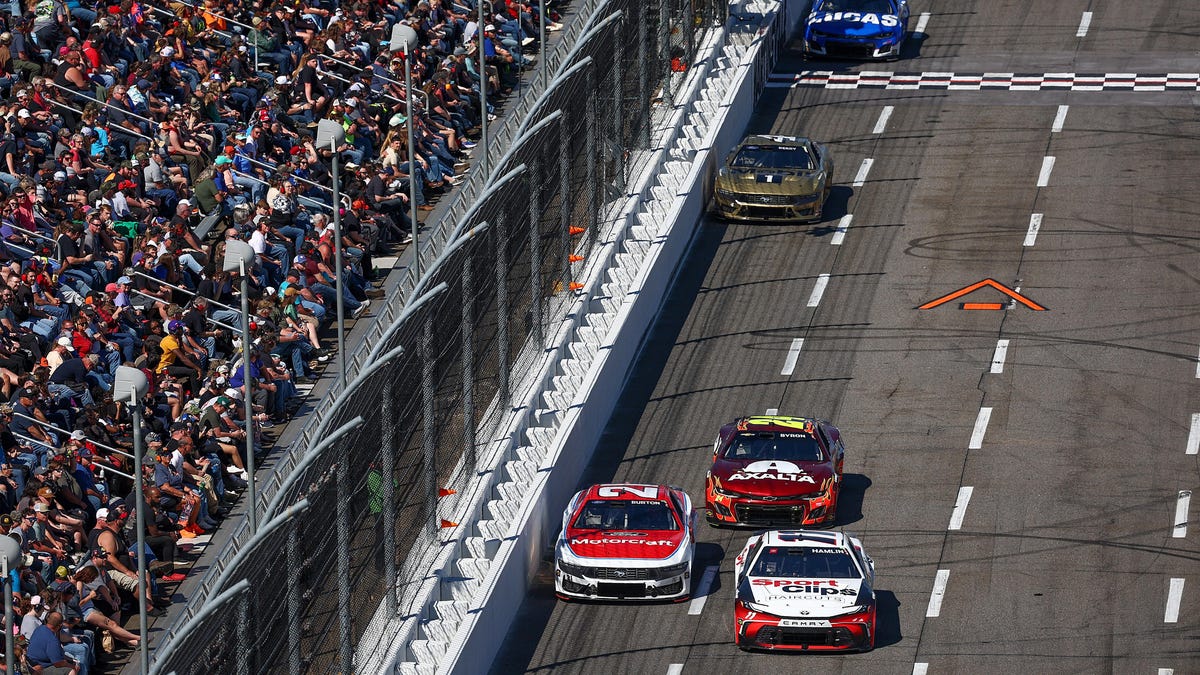I have fully maintained that the NASCAR Cup Series is, right now, one of the few motorsport series doing everything well. The races are competitive, the Next-Gen cars are well-designed pieces of machinery, and the series is looking to grow its horizons and audiences. There’s just one part that seems to stump people when I beg them to tune into races: What the hell are “stages,” how do they work, and how are their lengths determined?
To find out, we chatted with NASCAR’s Scott Miller. Miller was the former Senior Vice President of Competition and has now transitioned into the role of Competition Strategist — and that means he’s spent plenty of time developing and refining the stage racing concept. If anyone could answer my questions, it’d be him.
Elizabeth Blackstock: Would you mind starting by talking about how the concept of stages came to be and how NASCAR defines them currently:
Scott Miller: The concept of stages was born in 2017 as kind of an industry-wide collaboration with representatives from our broadcast partners, NASCAR, the teams, and drivers. We had this idea that was wanted to create more “moments” during the race, with points on the line. Instead of just the checkered-flag moment at the end of the race, we could have several meaningful moments [throughout a race] that were impactful to the whole season.
It has this secondary benefit for the broadcasters, too. We listen to our fans, and one big complaint was that the television coverage was breaking away from live action too frequently. At the end of the stage, they could get some of their breaks in, and we would have to break away from live action to go to commercial less frequently.
EB: If you were explaining how stages work to a brand-new fan, what would you say to them?
SM: If someone asked me that didn’t know anything about what we were doing, I would say that our races are broken up into three stages. And at the end of the first and second stage, the leading driver gets a playoff point for winning the stage, and there are season points awarded to everyone in the top 10. The third stage concludes with the checkered flag at the race end.
[Note: In some of NASCAR’s longer races, like the Daytona 500 and the Coca-Cola 600, races are broken up into four stages. In that instance, the leading driver of the first three stages wins a playoff point, while the top 10 receive regular-season points. The fourth stage concludes the race.]
EB: One of the big things I’ve been wondering recently is how stage lengths are determined. I was watching [NASCAR] with my husband over the weekend, and I realized that I knew the stage lengths had changed, but I also realized I didn’t know why that change had happened.
SM: There’s a lot of thought that goes into it. Generally, on 1.5-mile tracks, we make sure each stage is long enough that the teams can’t make [the full distance] on fuel. There needs to be a pit stop somewhere in that stage before the stage itself can come to a conclusion.
The thought process there is to create more strategy options. You could, say, just do two tires and try to get more stage points, but that could put you in jeopardy for the next stage. The fuel mileage factor creates all those different dynamics.
You’ll also notice, when we came out with the Next-Gen car, we had several races where the stage lengths were changed. The fuel cell capacity on the Next-Gen car was different than the previous car, so we had to make some tweaks there.
EB: How early do you determine the stage lengths? Is that something you’re deciding when the calendar is formed, or does it come more throughout the season?
SM: The way we determine stage lengths is basically in the rulebook, and we try to keep them constant before and during a season. We try not to change them unless we have to do something like change the race length, the way we did at Chicago, or if we determined for some reason that the stage length isn’t working. For example, if the Las Vegas stages didn’t work for the spring race, we would change them to make sure we’re doing the right thing in the fall.
EB: What about stages works so well for the drivers, crew chiefs, and fans?
SM: [Drivers and crew chiefs] like the points, and the fact that those points are on the line. Not every stage ends with a super exciting finish, but I’d say a vast majority of stages get really intense toward the end when those points are on the line. For fans, I think those moments make the race more exciting.
The teams and drivers, they also like collecting stage points because it impacts their ability to make the playoffs, and it affects their seeding in the playoffs. These stages have an impact all season long.







